Who Likes Rain? Chinese Book Review and Raindrops Craft! (VIDEO)
My daughter and I are learning how to read Chinese together, and we are currently reading 谁喜欢雨?(Who Likes Rain?) by 黄河弼. This is a lovely picture book about playing in the rain, and we learned some new rain onomatopoeia words from this book! To review new Chinese vocabulary related to rain, we made a bottle cap raindrops craft!
First, I will share details about the book. Then, I’ll show step-by-step instructions for this hands-on bottle cap raindrops activity! At the end of the post, check out the video of the bottle cap raindrops in action!
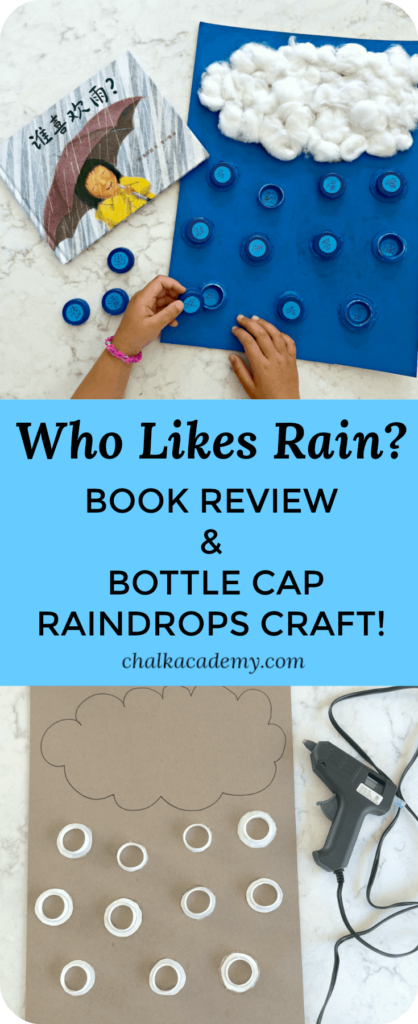
Chalk Academy is reader-supported. Some of the links are affiliate links. When you buy something through an affiliate link, we may earn a very small commission at no cost to you. Details here.
谁喜欢雨?(Who Likes Rain?) Book Review
Title: 谁喜欢雨?(Who Likes Rain?)
Part of the Song of Seasons set which includes:
- 夏日的白天和夜晚 (Summer Days and Nights)
- 雪地里的脚印 (Tracks in the Snow)
ISBN: 9787556802586
Author: 黄河弼
Publisher: 二十一世纪出版社 (21st Century Publishing House)
Type: Picture book (32 pages per book)
Age: 3-6 years
Where to buy:
- Simplified Chinese (no pinyin or English)
- English
This is a fun and engaging picture book with soft, realistic, Montessori-friendly illustrations and rhythmic language. Both of my kids (4.5yo daughter and 20mo son) love this book.
The question “Who Likes Rain?” is asked throughout the book, and my kids like to guess which animal is next! Since there’s a fair amount of repetition with the text, this book is helpful for learning important words related to rain!
As a non-fluent speaker who reads about 500 characters, I thought this book was fairly easy to learn. My daughter reads 800+ characters, and there were only a handful of unfamiliar Chinese characters for her.
I do wish that the text was larger and that page numbers were included.
Otherwise, I think this is a wonderful book for young children, and I am going to buy the two other books in this set.
Pictures of the 谁喜欢雨?(Who Likes Rain?) book

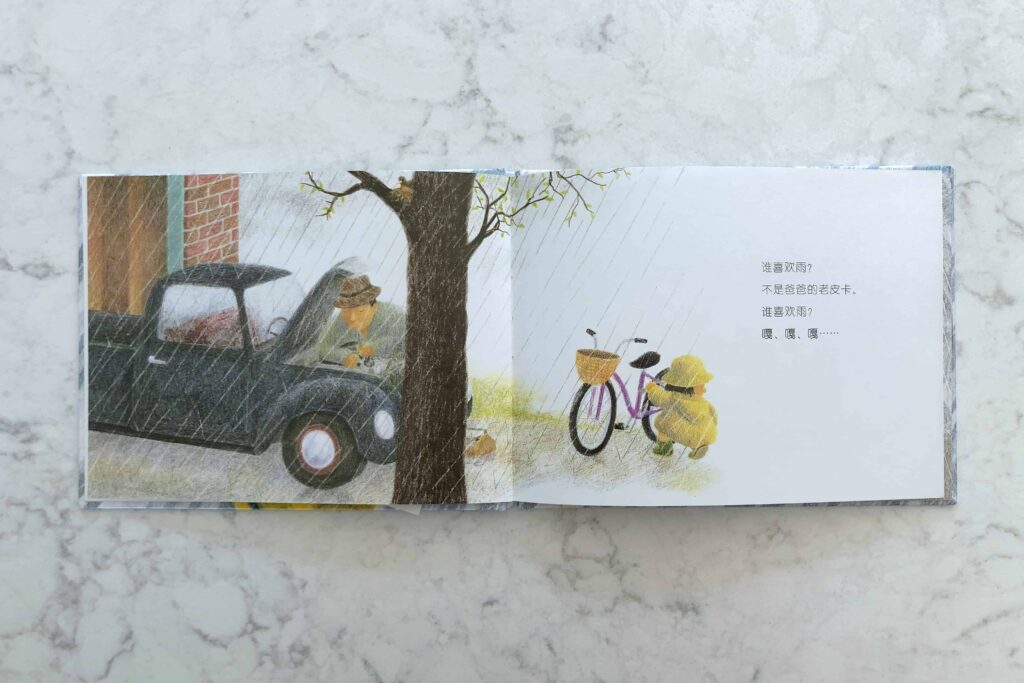
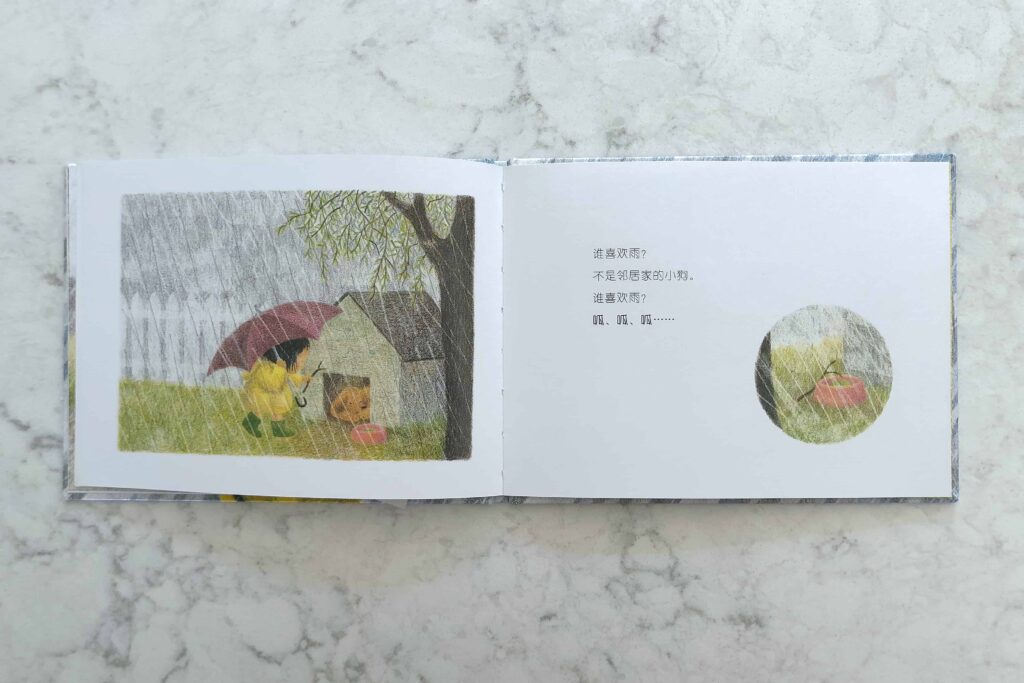

Bottle cap raindrops craft!
To reinforce important vocabulary about rain, we did a fun activity with recycled materials: cardboard and bottle caps! This hands-on activity can be adapted easily to your child’s learning level. We reinforced Chinese 象声词 (xiàng shēng cí / onomatopoeia) of rain sounds in the 谁喜欢雨? book! However, you can use dot stickers to reuse the activity to teach counting, English alphabet, or other languages!
In addition, this activity is a great way to strength fine motor skills and practical life skills! My daughter learned that the caps must be rotated clockwise to loosen and counterclockwise to close.
Important vocabulary:
Note: I did not write English translations for words that are onomatopoeia
- 雨 (Yǔ / rain)
- 乒 (Pīng)
- 啪嗒 (Pā dā)
- 敲 (Qiāo / knock)
- 落 (Luò / fall)
- 浇灌 (Jiāoguàn / pour)
- 咕嘟 (Gūdū)
- 哗啦 (Huālā)
- 噗噜 (Pū lū)
- 滴答 (Dīdā / tick-tock)
- 簌 (Sù / rustle)
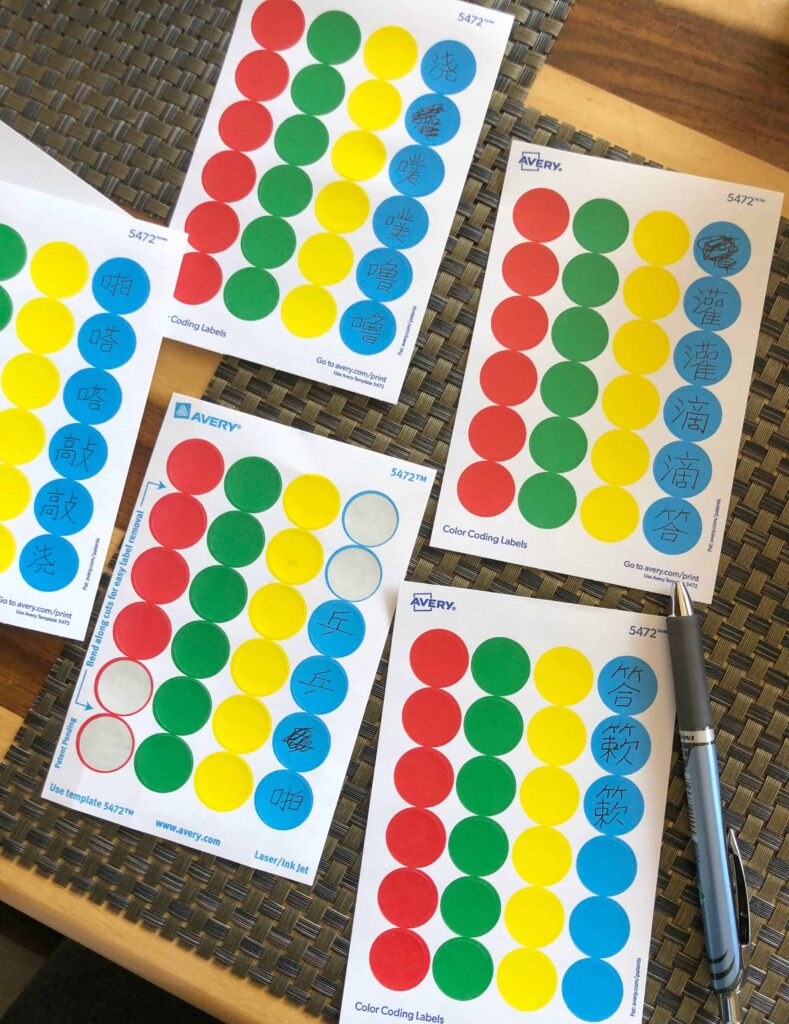
What you need:
- Cardboard
- Scissors
- Bottle cap & bottle neck – milk carton recommended as cardboard is easier to cut than a plastic bottle
- Hot glue gun
- Blue paint (we used this acrylic paint)
- Sharpie marker
- Regular glue
- Cotton balls
- Dot stickers
How to make the raindrops bottle caps word matching activity:
- Cut bottle caps and necks from milk carton; wash clean
- Draw cloud shape
- Heat up glue gun – please keep young children away during this step
- Squeeze glue carefully on bottom edge of bottle neck
- Let glue dry
- Paint cardboard
- Let paint dry
- Squeeze regular glue onto cloud
- Pull apart cotton balls and affix to cardboard. This step is fun for sensory play! Also, pulling the cotton apart makes less cotton needed for the project.
- Write words on dot stickers – 2 sets so that 1 set is for the bottle neck, and the other set is for the bottle caps
- Affix dot stickers to cardboard under bottle neck and caps!
- Screw on bottle cap to matching bottle neck!
- After mastering the words on the bottle caps, you can write different words on dot stickers and tape over the old words!

Tips for success:
- Super glue does not work because it is too thin for the uneven surface of the bottle neck. I tried this several times, and the plastic repeatedly fell off. Hot glue is most secure.
- My daughter noticed that you initially have to orient the sticker upside down in order for the cap to be turned to the correct direction!
- We reviewed 11 different words for this activity, but you may consider reviewing less words and writing them on multiple caps for more repetition, depending on your child’s reading level.
Pictures of the process!

Before we glued on the cotton balls, I wrote the word 雲 (yún / cloud) in traditional Chinese to see if she could point out the difference with the simplified Chinese version 云.
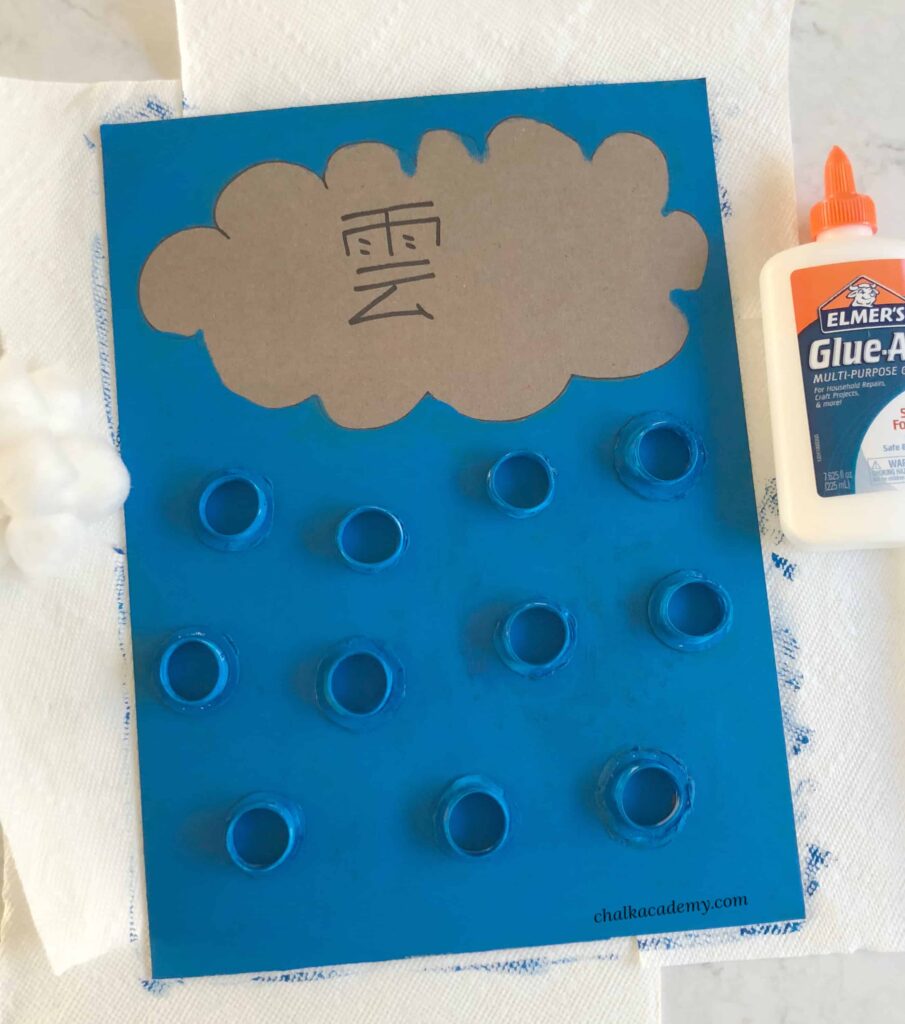
We squeezed glue all over the cloud’s base; then we added cotton!
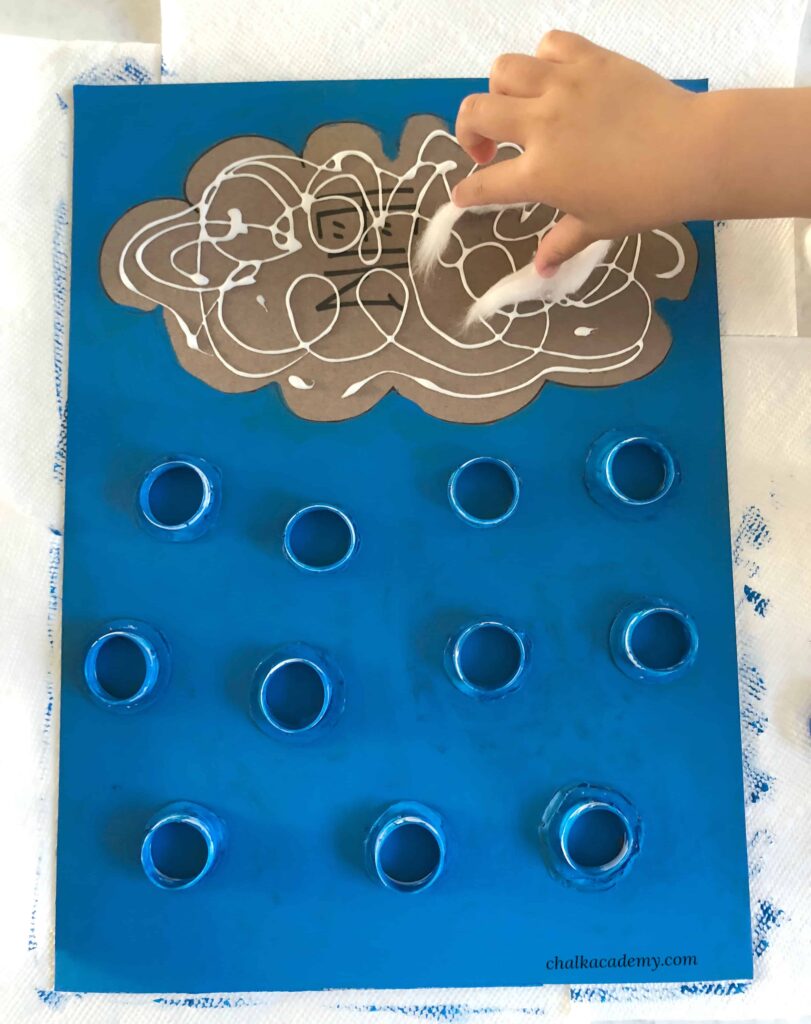
Activity prep is extra fun when my daughter is involved in the process!

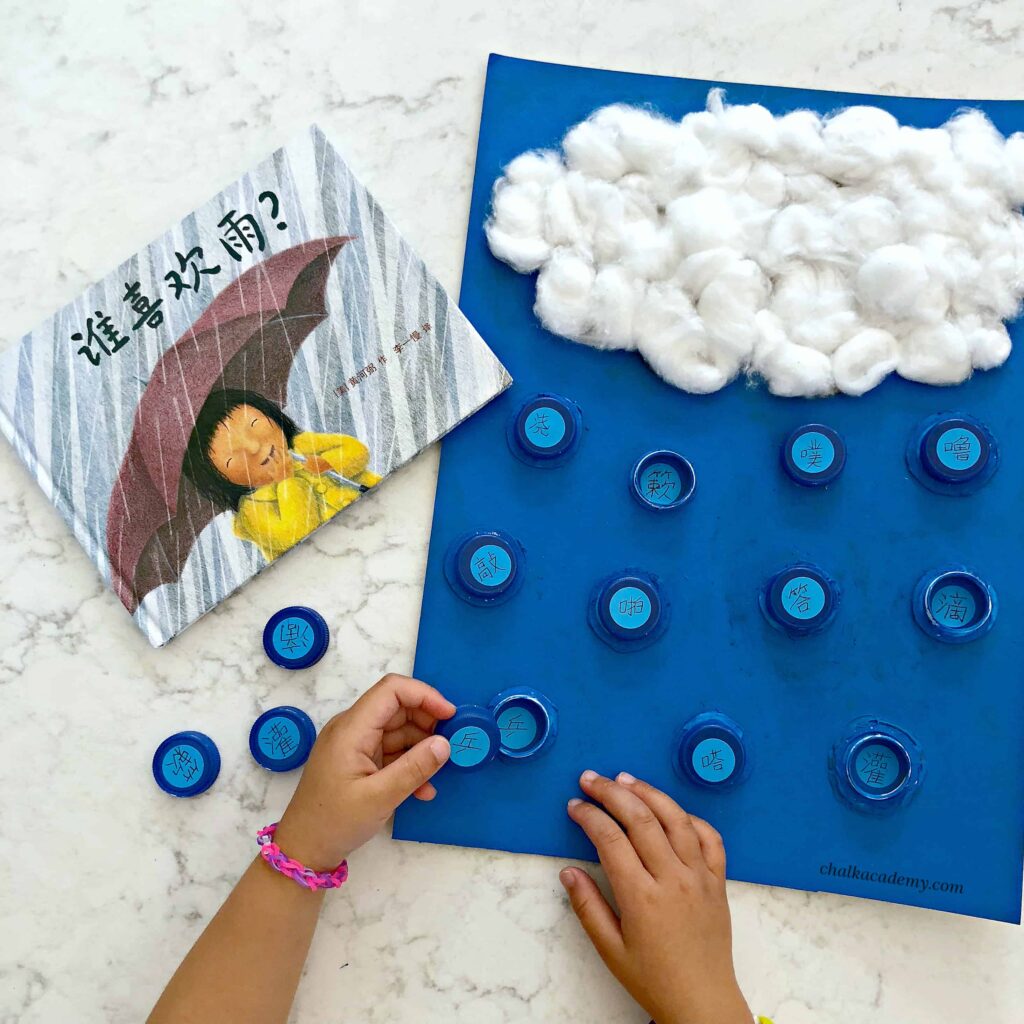
And here is the final product!
Video of the bottle cap raindrops in action!
Have you tried this bottle cap word matching activity?
If you try this activity, please let us know in the comments below! What age(s) are your kid(s), and how did it go? We’d love to hear about your learning experience!
Recommended activities
Here are other fun rain learning activities that you can do with your child:
- Rain Stick Sensory Bottles
- It’s Raining Paint!
- Water Painting Chalk Raindrops – Sight Word Activity
- Learning About 雨滴 with Raindrop Stickers
